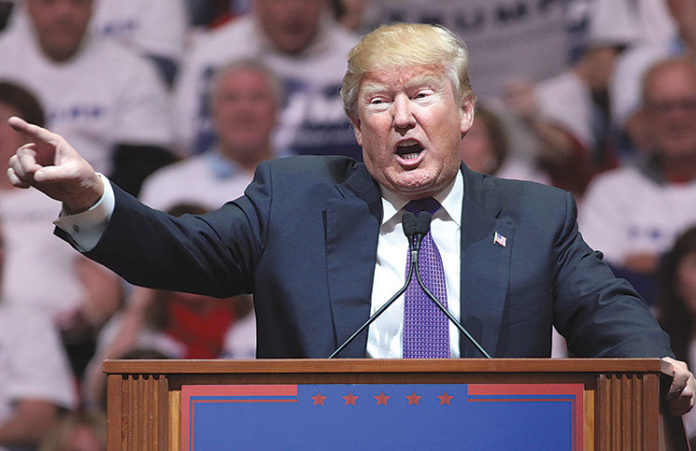On Oct. 12, President Donald Trump took his first steps in getting rid of Obamacare by signing an executive order on healthcare that he said will “improve access, increase choices and lower costs for healthcare,” according to a news release from the White House Press Office.
According to the news release, Trump stated: “The time has come to give Americans the freedom to purchase health insurance across state lines, which will create a truly competitive national marketplace that will bring costs way down and provide far better care.”
The order directs the U.S. Secretary of Labor to consider expanding access to Association Health Plans (AHPs), which could potentially allow American employers to form groups across state lines, according to the news release. This could allow employers to form AHPs through existing organizations, or create new ones for the express purpose of offering group insurance.
By potentially making it easier for employers to join together, this could make it so workers have access to a broader range of insurance options at lower rates in the large-group market, according to the news release.
According to an Associated Press Q & A article by Tom Murphy: “If the White House lets state-regulated groups fall under federal regulation, a lot could change. Insurance offered through an association could set prices based on a customer’s health, which can’t happen now. It could exclude potentially expensive benefits like prescription drug coverage to knock down the premium or price for coverage. Federal regulation also would make it easier for associations to offer coverage in several states, which would increase choice. The White House also might loosen restrictions on short-term insurance plans that generally have limited benefits and remain in force for less than a year.”
“However, this option could upset a delicate balance needed to control prices. Insurers depend on the money they collect from healthy customers to counter claims they pay for the sick. Without those healthy customers, the cost might rise faster for people with medical conditions,” the Associated Press Q & A article states.
Tyson Fuehrer, a consultant and Benefits Department manager with Biggs Insurance Services in Vancouver, said that to truly address the rising costs of healthcare, there needs to be more done in the way of preventative care and giving consumers the tools they need for their health journey.
“At our Southwest Washington Healthcare Summit today (Oct. 12) we had the chance to ask key executives of insurance carriers in the county about the executive order,” Fuehrer said. “To summarize responses, there is more guessing at this point of what will transpire. Many more details are needed to understand the actual impact. Overall, there is a general belief that increasing health plan options for consumers is appealing to solve many concerns over increasing premiums and costs. To maintain potential reductions in cost will require many people to enroll and pay premiums to stabilize the market; otherwise we will likely see the same results from the co-ops that quickly started and ended just as fast.”
Pete Scruggs, president of Golsan Scruggs insurance, said that it’s certainly too early to know for sure what’s going to happen in the insurance world, but that Trump’s executive order is definitely going to create an interesting scenario.
“The law of large numbers does create lower risk,” Scruggs said. “If you can have employers collaborating they are going to have opportunities to have a lower risk. They can be more strategically creative; it could be a very positive sign. The challenge is going to be that most good insurance is local and regional. States are so strong in regulating their individual markets, but he’s (Trump) trying to say, ‘let’s have a more nationalized system.’ We probably won’t know for at least six to eight months what it’s going to look like.”
Scruggs said that he doesn’t think Trump’s executive order will change the associates’ approach to potential clients at Golsan Scruggs.
“Our approach has already been to focus on creating opportunities for our employers to participate in larger coalitions,” Scruggs said. “It will be interesting because it’s a direction that will favor what we’re already doing. More flexibility is good for our clients.”




